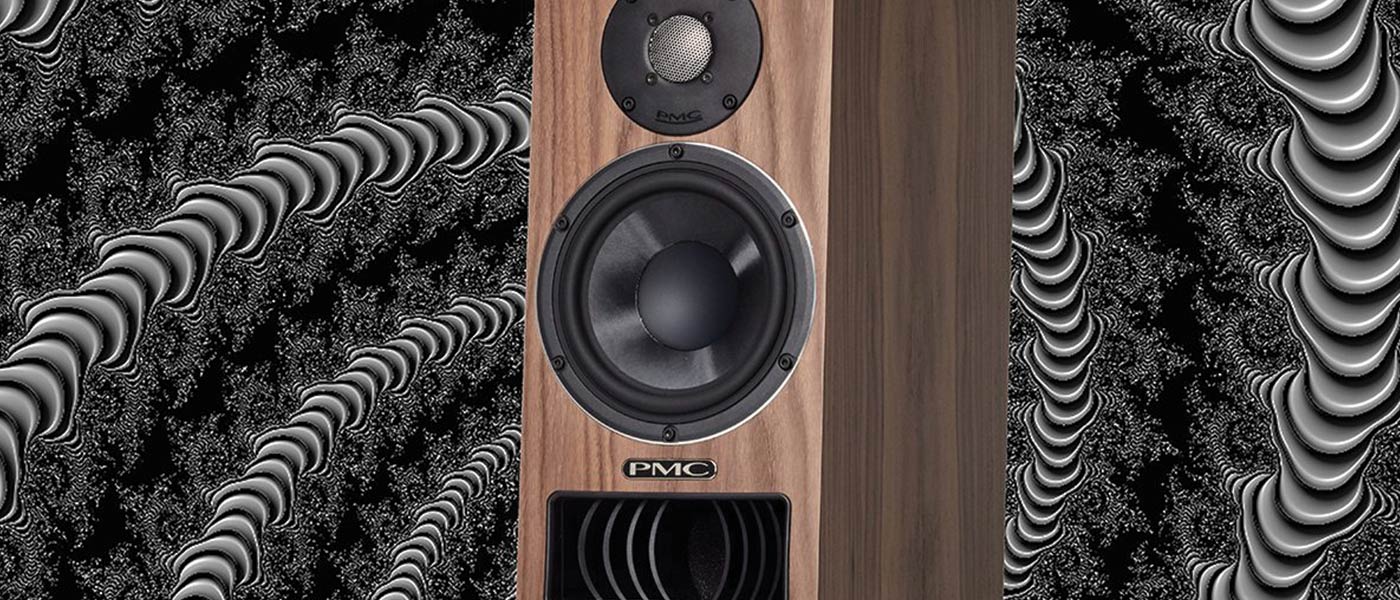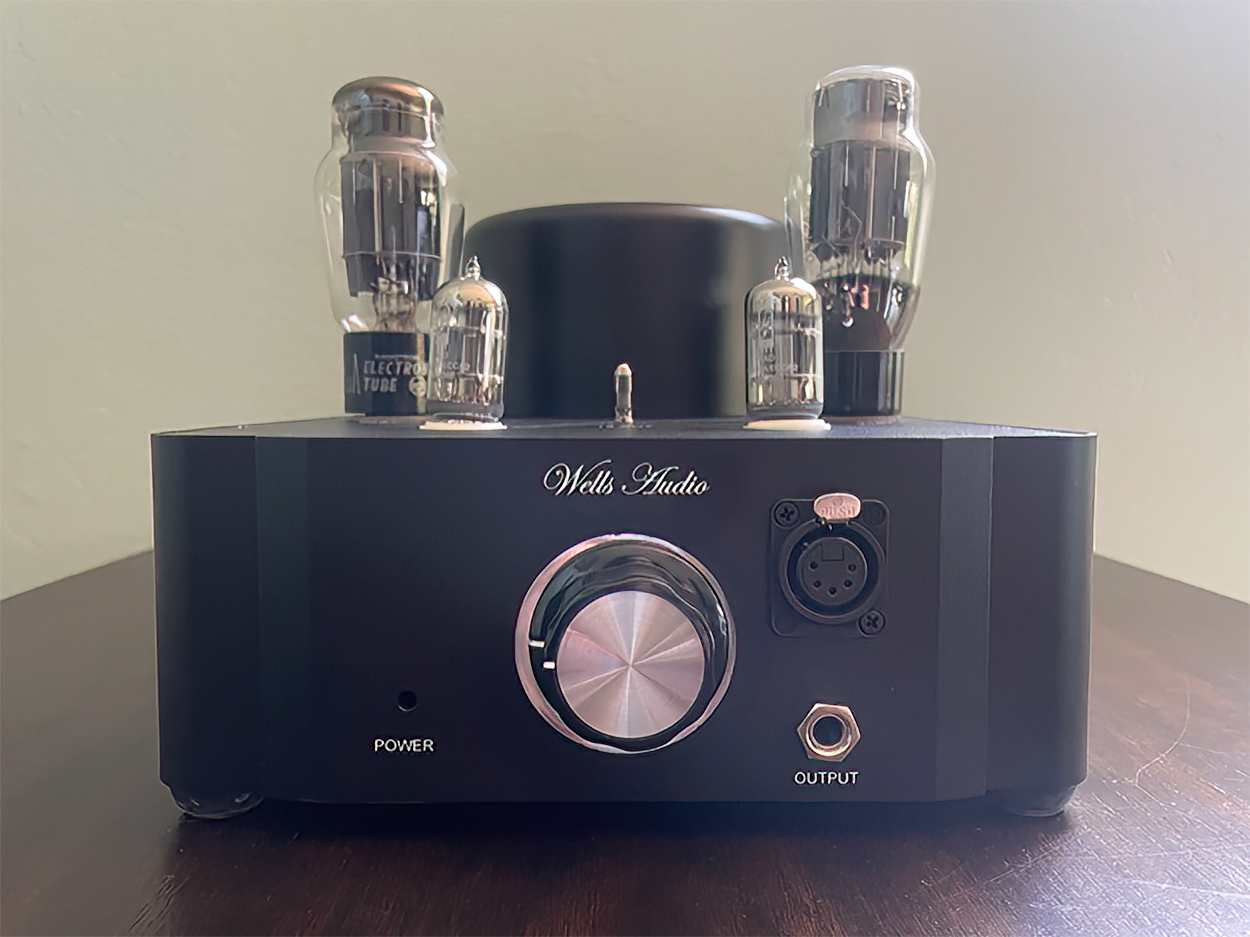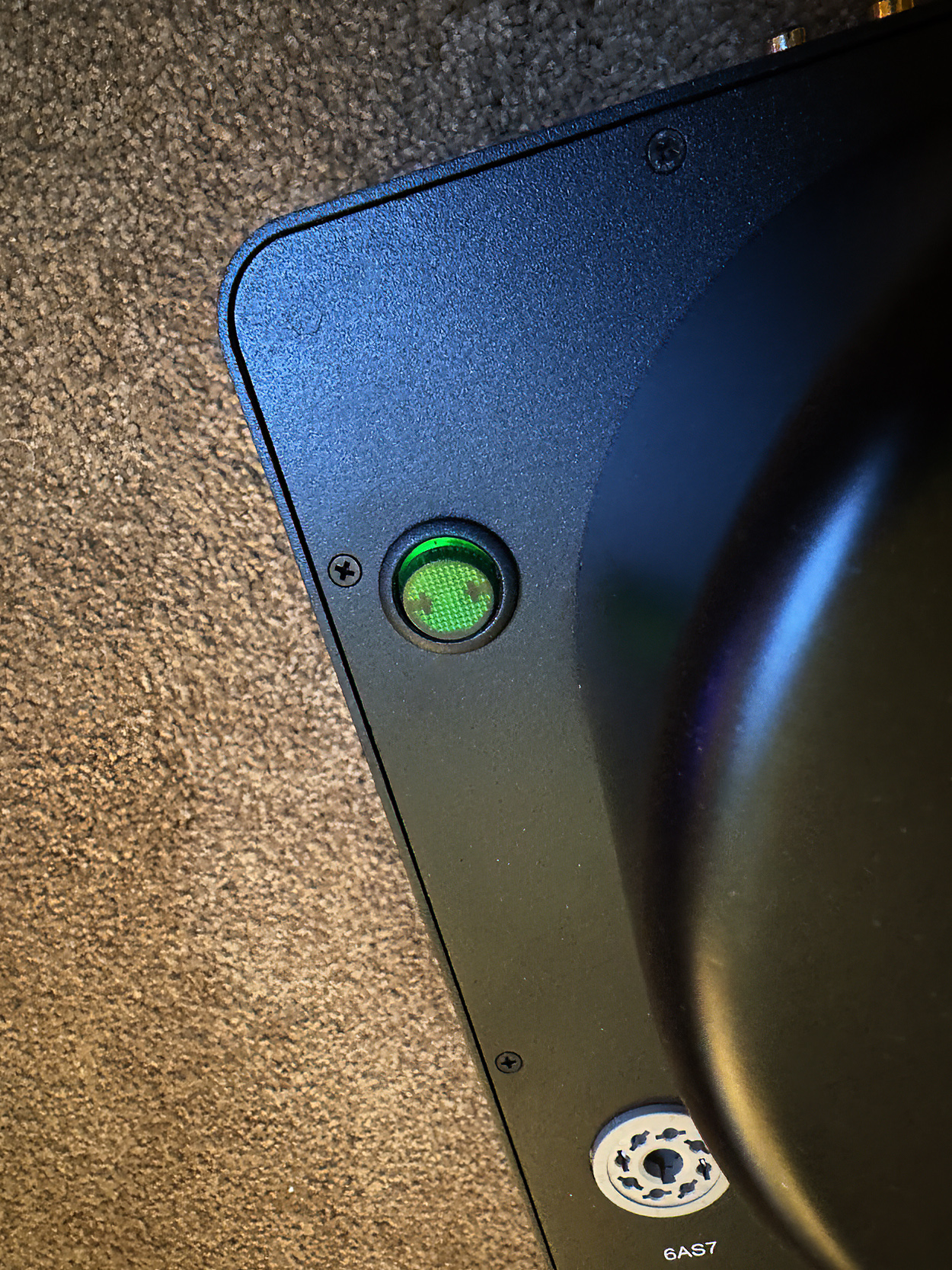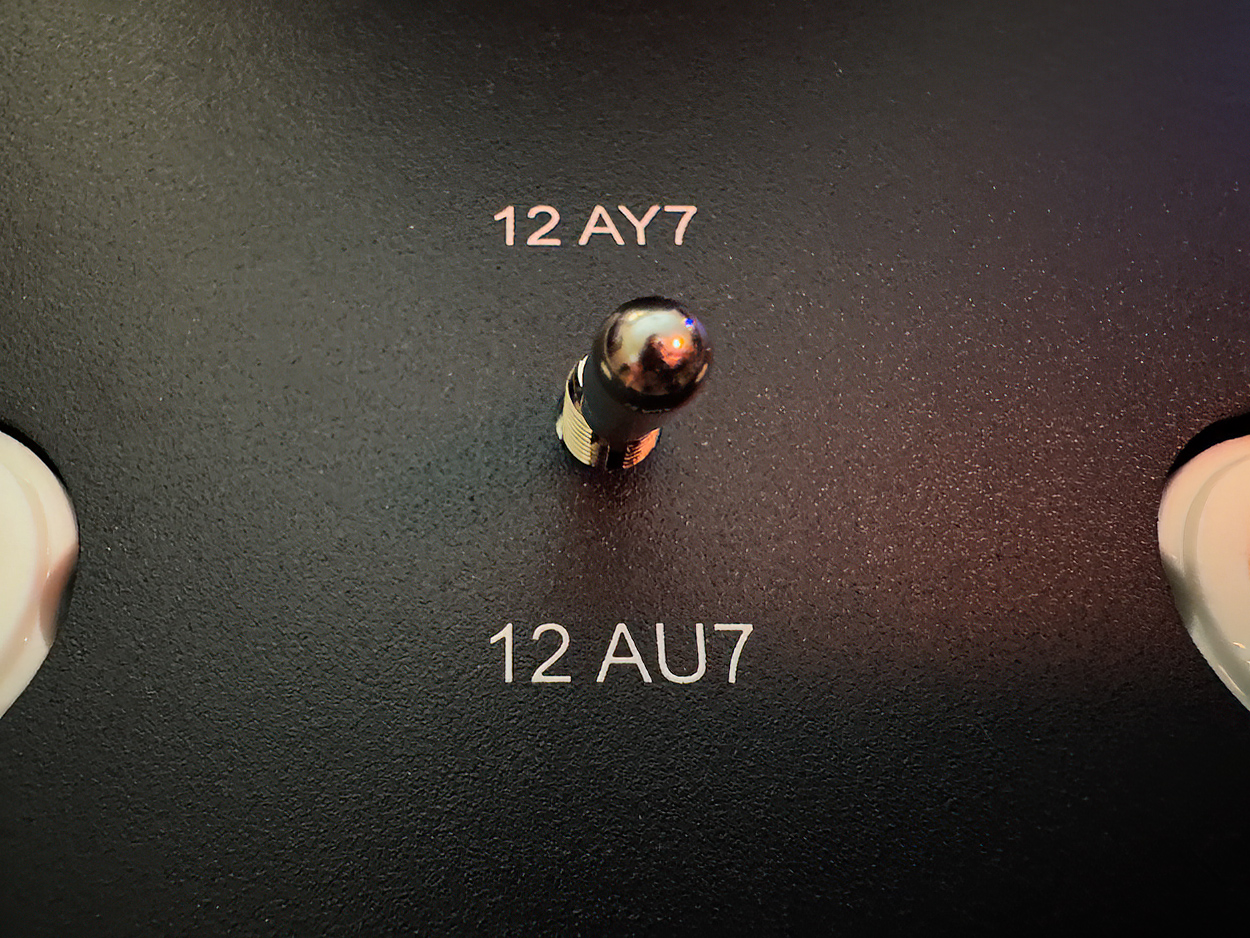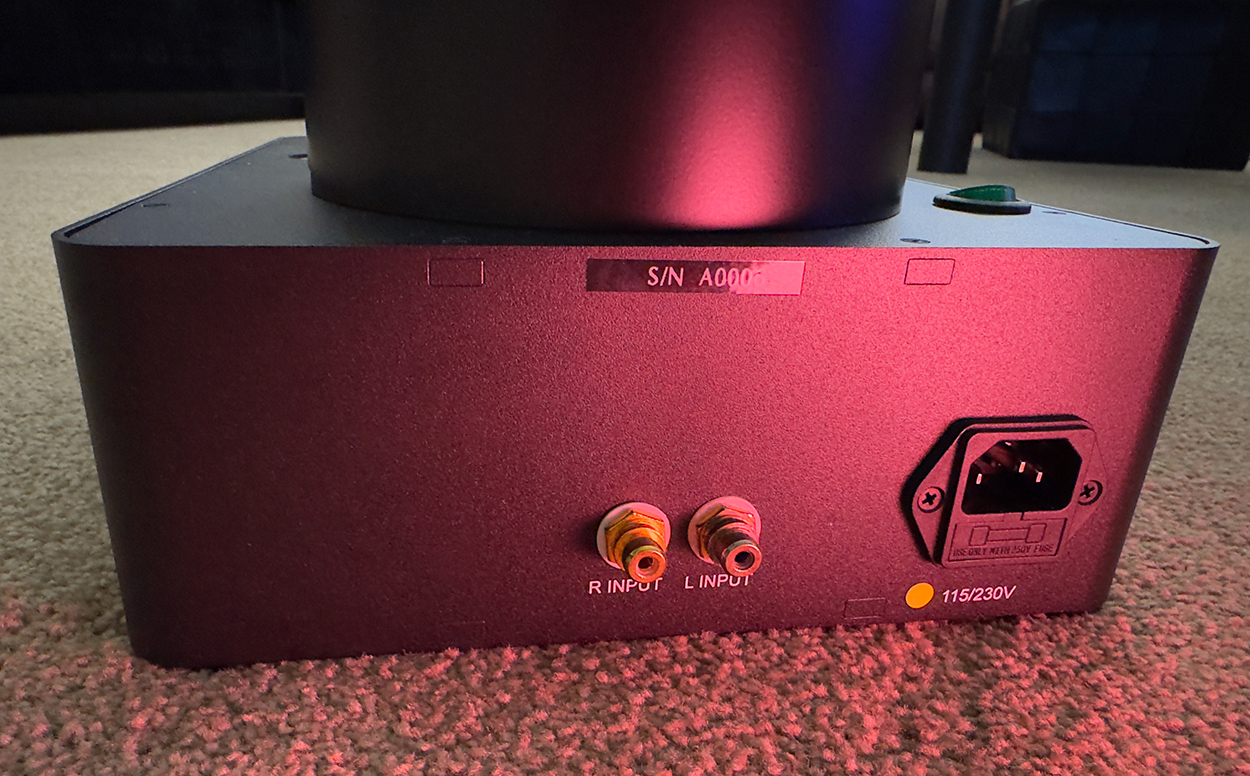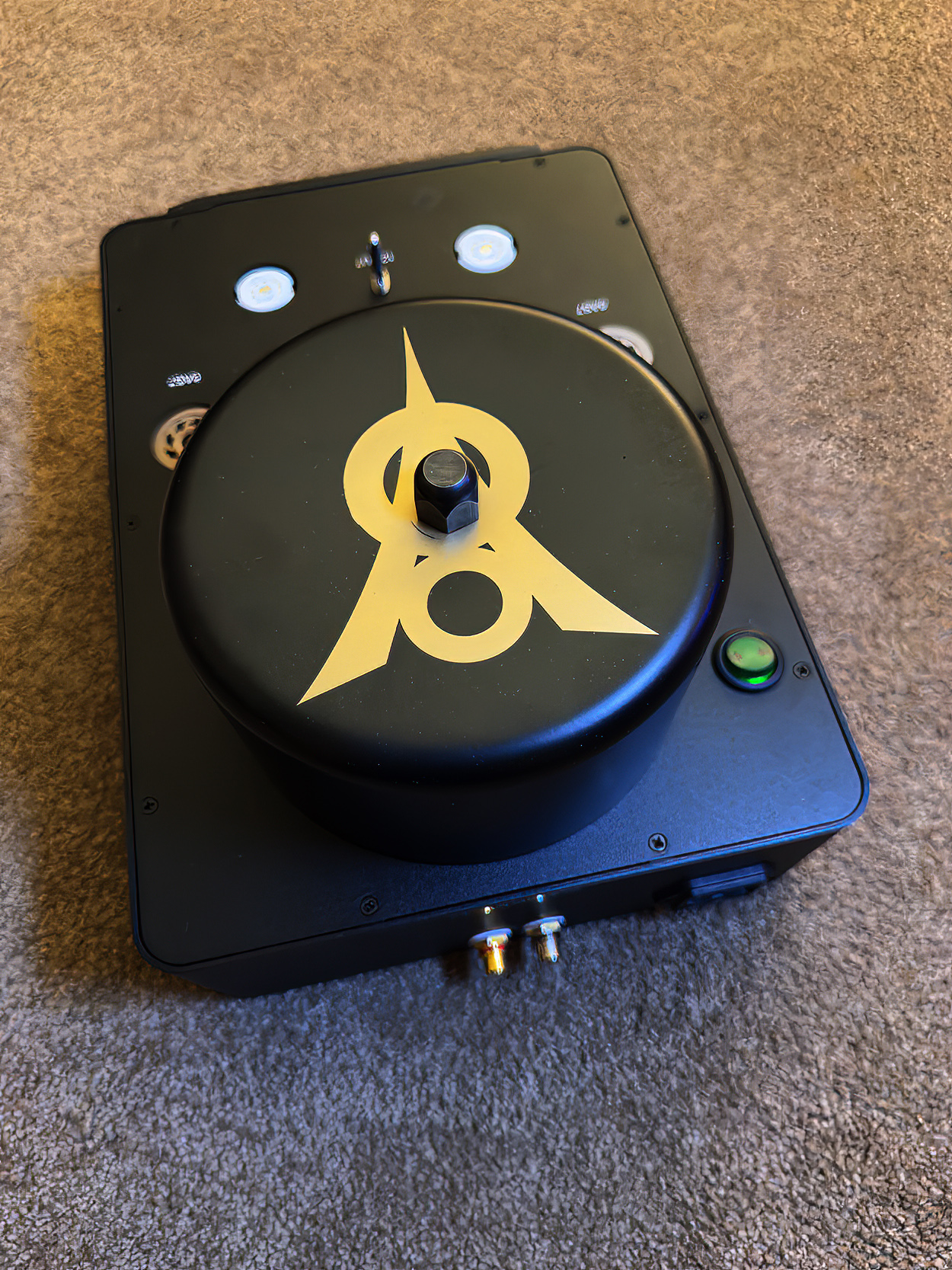It even gives you a choice of what the amplifier will sound like, allowing some matching to the headphones you have and the sound you want to achieve.
The market seems almost overloaded with headphone amps, largely due to the increasing popularity of headphone listening. The Wells Audio V8 is a large, tube-driven unit with a flip switch that lets you, to some degree, tailor the sound to your own tastes. Although to many people, tubes are a relic of the audio past, many audiophiles swear by the smooth, ‘non-digital’ sound tubes can offer.
The Wells Audio V8 gives you a taste of both worlds, offering a highly detailed presentation many would associate with digital amplifiers and another position that offers a smoother response closely matching a sound preferred by many for acoustic recordings, vocals, and small ensembles.
The amplifier is powerful, allowing you to match the driving needs of just about any headset on the market, and supports balanced and unbalanced connections. I found the sound exemplary with every headphone brand or design I tried it with, and I found the circuit switching to provide some real audio benefit.
Specifically, here are some points worth sharing about the amplifier:
Wells Audio V8 Headphone Amplifier Highlights
- Attractive in a retro way. It has simple, clean lines and many users will appreciate the warm glow of its tubes.
- Easy to hook up, with self-explanatory labels front and back.
- Tubes are included.
- Great dynamic range and power. The A8 should drive any headphones you can plug in.
- Balanced and unbalanced outputs. Note that according to Wells Audio, the V8 is a fully unbalanced design so the 4-pin balanced connector will not actually offer balanced performance. It is offered as a matter of convenience for those customers with balanced cables.
- More care and caution are needed than with a solid-state headphone amp.
Headphones are still the rage, for travel, listening to music at home, and even for home theater. They offer better sound than many speakers on the market, and they don’t succumb to room acoustics. They also offer privacy for the listener and don’t bother others in your home.
Many consumers often just plug their headphones in the provided jack on the front of their receiver or pre-amp, but they are likely depriving themselves of the kind of sonic quality headphones can provide.
A headphone jack is a ‘must provide’ feature for just about every home audio/video component but behind the faceplate, the circuitry is often bare bones rather than something designed to provide high-end sound. A simple headphone circuit is often just a ‘spec check-off’ so the brand can say it supports headphones.
Recently, we’ve seen quite a few higher quality separate headphone amps, some solid state, some tube-based that are reaching customers who want more than the basics. Schitt and others are offering some excellent headphone amplifiers and the Chinese manufacturers have jumped in with some low and high-cost tubed amps as well.
Jeff Wells, the ‘Wells’ in Wells Audio, has been around high-end audio for multiple decades, getting a solid reputation as an audio dealer on the West Coast at Audible Arts. Over the years, he developed his own ideas about what good components sound like, and he now, through his company, Wells Audio, offers amps, pre-amps, DACS, and other products that have been well-regarded by customers and reviewers.
Back in 2021, I reviewed another tubed headphone amplifier from Wells Audio called the Dragon. It had excellent sound and was competitive at the same $1500 price point.
That brings us to the Wells Audio V8 Headphone Amplifier. It offers, according to Jeff Wells, great sound “with almost any headphone”. That’s a good trick because so many headphone amps or built-in amps really don’t drive everything out there well at all. In my own experience, I’ve bought new headphones only to find out that my current headphone amp won’t drive them. It gets frustrating, and the V8 solves that part of the problem.
Design:
dual triode tube design based on 6AS7 power tubes and either 12AU7 or 12AY7 driver tubes (user switchable).
Power out:
.326 WRMS into 300 ohms.
Bandwidth:
5 hertz to 30 kHz +/- .2dB.
Gain:
14.9 dB
Input impedance:
470k ohms
Switches:
Power on/off
Inputs:
L/R RCA unbalanced
Controls:
volume knob, with 24 detents; LED light to the left of the volume control lights green when the amplifier is stable
Outputs (2):
a 4-pin balanced jack, and an unbalanced 6.3 mm female plug
Weight:
11 lbs.
Size:
13.5″ x 9″ x 3.5”
Included:
Heavy duty power cord, all needed tubes
Manufacturer:
Wells Audio
SRP:
$1500
Website:
Company:
SECRETS Tags:
Wells Audio, V8, Headphones, tubes, amplifiers
Secrets Sponsor
The V8 is a heavy product, especially as compared to most solid-state headphone amplifiers. At first glance, most audiophiles will notice the large toroidal transformer. A well-designed transformer offers deep power reserves, especially for inefficient headphones, and especially when listening to deep bass. The power tubes are 6AS7s, and there are 2 different types of driver tubes, a 12AU7 and a 12AY7. These tubes are user-selectable using a switch on the top plate. I’ll have more to say about the use of these different driver tubes later in the review.
A power switch on the top plate turns the unit on, and an LED glows red until the unit is stable, and then that LED turns green.
The unit came very well packed, with pre-cut foam surrounding it. One opens the box, removes some of the foam pieces, and lifts the amplifier out so it can be placed on a flat surface. Each tube is well packed in a compression box protecting the tubes, and they arrived undamaged.
To get things up and running the tubes are inserted on the top plate with the tube label corresponding to the markings on the V8. Tubes can only be inserted one way, and care needs to be taken so you don’t bend or break a pin. I found it easy enough to get everything in the right place.
The heavy-duty power cord is inserted at the back and then plugged into an appropriate AC outlet.
My early review model was shipped without a manual, and I had a few issues along the way. First off, after plugging it in I didn’t hear audio from the right headphone driver, and the sound from the left driver was distorted. To try to determine the issue, I tried some other headphones with the same result. Then I switched tubes around which didn’t fix anything. Turns out, an email from Jeff Wells revealed that the V8 should be turned on and left alone for a few hours. After doing that I had both channels, and the sound was clear and undistorted.
I also heard a loud pop from the amplifier in the headphones when switching from one tube set to the other. I learned later that the amplifier must be off when switching. Happily, a manual is now included.
I had a variety of headphones around, from Sennheiser, HIFIMAN, Beyerdynamic, and B&O. For most of my listening, I used my Focal Clear MG Open Back Headphones which are my usual reference for evaluating music and source equipment. They have a 55-ohm impedance, which is pretty low, and work well with many portable players.
My source was a FiiO M15 DAP, and a vintage Teac reel-to-reel recorder playing from my collection of pre-recorded tapes.
I started my listening by using the 12AU7 tube and then decided to later switch to the 12AY7 to try and hear the differences. My listening tastes run from orchestral to small acoustical recordings of classical or jazz, but I also enjoy rock and electronic music, so I gave different types of music each some time.
I started with some choral music, which I find well suited for an audition to get the ambiance of the recording venue, and to hear accurate positioning of the instruments.

Voces8, “Infinity”
Infinity: Voces 8 – This vocal octet always produces wonderful music that is well-recorded and smartly performed. I thought the V8 rendered the positions and the recording venue very well, giving a stunning presentation on the Focal headphones. Not all the tracks were performed in the same room, and it was easy to tell the difference.

Emmanuelle Bertrand, Pascal Amoyel, BBC National Orchestra of Whales, Pascal Rophé, “Shostakovich: Cello Concerto No. 1”
Shostakovich: Cello Concerto – BBC National Orchestra of Wales – Plenty of dynamic range in this piece, and again, the positions of the instruments were well defined. Of course, it’s difficult to credit just the headphone amp. Playback through the FiiO is good using its own headphone output, but running the analog outputs from the FiiO to the V8 and then to the Focal headphones gave the music greater ‘punch’ and deeper low frequencies.
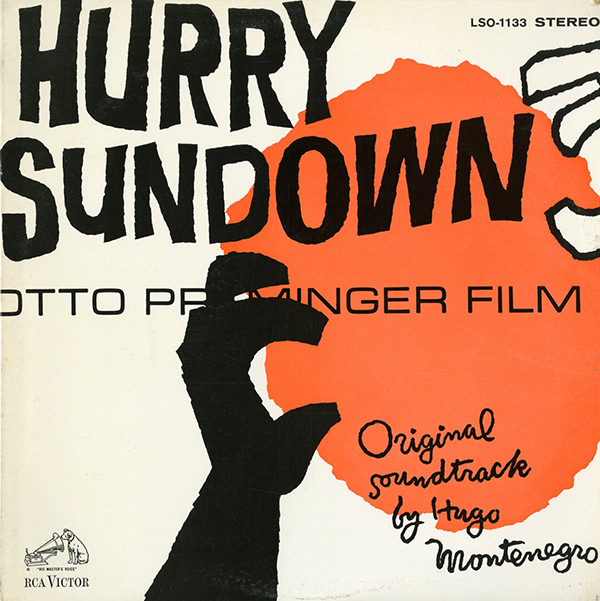
Hugo Montenegro and His Orchestra, “Hurry Sundown (Original Film Soundtrack)”
Hurry Sundown – Hugo Montenegro – A great jazz soundtrack to a terrible movie from the 70s, this RCA recording (remastered as MQA on Tidal) sounded just fine. It reproduced quite well on these headphones. For this music, I switched the driver tubes to the 12AY7, and then the playback got a bit more mellow, or more ‘tubey’ to my ear. The sound was not quite as neutral as with the 12AU7 tubes, but it was very pleasant, and I could easily begin to see why this ability to switch the frequency response of the amp was valuable.

Rebecca Pidgeon, “The Raven”
Rebecca Pidgeon – The Raven – A great recording I often use as a test. The track “Spanish Harlem” is a favorite, with a small ensemble and percussion. I again listened to this 88.2/16-bit FLAC in both switch positions, finding the 12AU7 very neutral, but the 12AY7 tubes gave the female vocal a nice added warmth.
My reel-to-reel listening went well. I had some pre-recorded classical tapes that sounded quite good, although the ever-present tape hiss was pretty front and center. Not the fault of the V8. It reproduced that high-frequency hiss quite accurately.
Secrets Sponsor
At $1500 this is not an inexpensive headphone amplifier. Yet any serious listener, perhaps with a variety of headphone brands who listens to a wide range of music will find great value in the V8. Even lovers of solid-state amps will find a lot to like in the sound of this amplifier.
- Simple setup
- The sound is excellent with a variety of sources and headphones.
- Ample power to drive the most difficult loads.
- The ability to switch frequency presentations is a plus.
- Well built.
- A more comprehensive, illustrated manual.
- More info on the care of tubes, and ventilation warnings.
Headphone listening is personal, with a great variety of types and designs. It’s like speaker selection. Some listeners love dipoles, while others prefer direct radiating designs, and so on.
Now a headphone amplifier adds another link in the chain. It can add, detract, or be neutral. In my experience with the Wells Audio V8, I found it a positive addition. The V8 is certainly as good a headphone amplifier as I have had the privilege to test.
Compared to the Dragon Headphone Amplifier I reviewed 3 years ago I’d have to rely on memory. I liked that amplifier, but I’m willing to bet the V8 is more refined and the switchable frequency response of the V8 is a real plus.
While a ‘perfect’ device would neither add nor detract from the original sound, in the real world, headphone amplifiers without enough power can lower the performance of a headphone. The frequency response choices made by a manufacturer can also add or detract, largely because your subjective taste may not match the taste of the amplifier designer.
The Wells Audio V8 can make an end run around some of these issues. With plentiful power to drive almost any headphone (something easily confirmed in my testing), and by offering a neutral or more ‘tube’ sound with what many will say is additional warmth, you can ‘tune’ the amp not only to the type of headphone you are driving but more closely match your subjective likes to the response of the output tubes.


